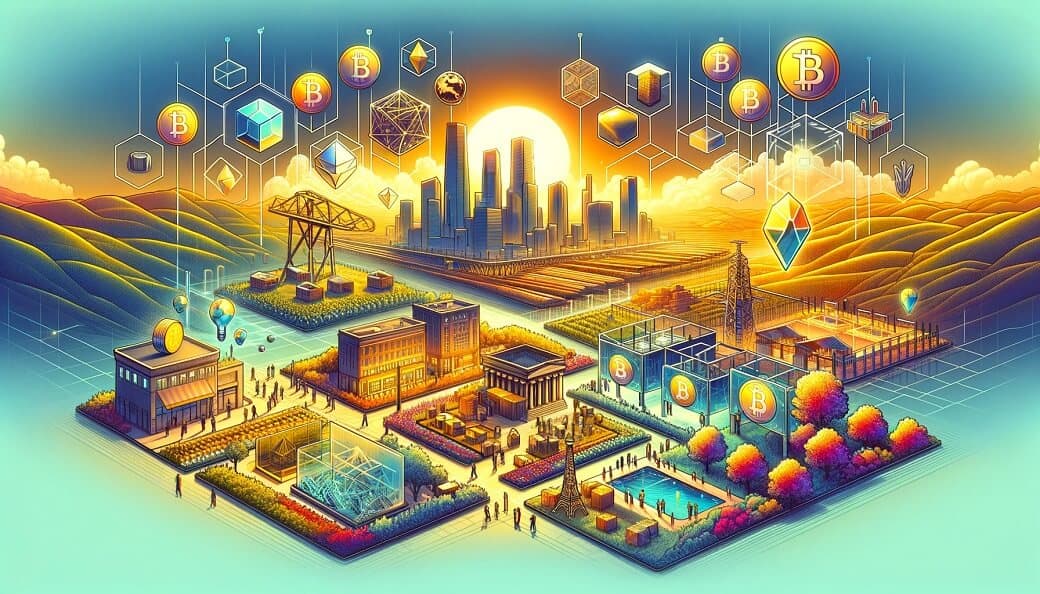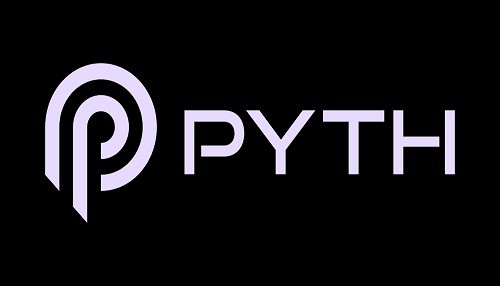Real World Assets (RWAs) in the cryptocurrency ecosystem are a transformative bridge connecting the tangible assets of the traditional financial world with the innovative, decentralized realm of blockchain technology. This integration allows assets such as real estate, commodities, and even intellectual property to be tokenized, representing their value and ownership through digital tokens on a blockchain. This tokenization process not only maintains the intrinsic value of these assets but also enhances their liquidity, accessibility, and divisibility, making them a vital part of digital financial portfolios.
The significance of RWAs in crypto is multifaceted, bolstering the crypto ecosystem’s diversity, stability, and growth potential. By bringing the reliability and tangibility of traditional assets into the digital sphere, RWAs help mitigate some of the volatility and speculative nature associated with cryptocurrencies. They serve not only as a gateway for traditional investors to enter the digital currency space but also provide crypto investors with a pathway to more diversified and potentially less volatile investment options. This symbiosis between the digital and the tangible worlds is pivotal in advancing the adoption and maturation of cryptocurrency and blockchain technology, marking a significant step towards a more integrated financial ecosystem.
The Tokenization Process of Real World Assets
The tokenization of Real World Assets (RWAs) involves converting the value and ownership of physical and financial assets into digital tokens on a blockchain. This intricate process begins with the selection and verification of the asset to be tokenized, ensuring it’s legally compliant and accurately valued. Once vetted, the asset’s value is represented as digital tokens, with each token reflecting a portion of the asset’s total value. This digital representation is then recorded on a blockchain, offering a transparent, secure, and immutable ledger of ownership and transactions.
Tokenization democratizes access to previously illiquid or inaccessible assets by allowing them to be divided into smaller, more affordable shares. For instance, a high-value property can be tokenized into thousands of tokens, enabling investors to purchase a stake in the property for a relatively small amount of money. These tokens can then be traded on DeFi platforms and services, providing asset owners and investors with liquidity and flexibility not previously possible. Moreover, blockchain technology facilitates these transactions with enhanced security and efficiency, ensuring that each token accurately represents ownership of a portion of the underlying asset and can be bought or sold seamlessly in the digital asset markets.
Diverse Types of Tokenized Assets
The scope of Real World Assets (RWAs) that can be tokenized is remarkably broad, encompassing a wide array of both tangible and intangible assets. This versatility demonstrates the significant potential for blockchain technology to revolutionize access and liquidity across various sectors.
Stablecoins represent one of the most direct applications of tokenization, offering digital tokens pegged to the value of fiat currencies or other stable assets, providing a bridge between traditional currency and cryptocurrency markets. Beyond stablecoins, precious metals like gold and silver have been tokenized, allowing investors to own fractions of physical assets that have traditionally been less accessible due to high entry costs and storage complexities.
Real estate, with its high value and illiquidity, stands out as a prime candidate for tokenization. By breaking down property ownership into smaller, more affordable shares, tokenization opens the door for a wider range of investors to participate in real estate markets, potentially transforming property investment and ownership. Similarly, infrastructure projects, which require substantial capital and long-term commitments, can benefit from tokenization by accessing broader sources of funding from a global pool of investors, thus facilitating development and innovation in public and private projects alike.
This diversity not only expands the investment universe within the crypto domain but also bridges gaps between traditional investment opportunities and the modern digital economy, enhancing the appeal and utility of blockchain technology across sectors.
The Benefits of Real World Asset Tokenization
The tokenization of Real World Assets (RWAs) carries several transformative benefits, chief among them being enhanced liquidity and increased market accessibility. Tokenization converts physical and financial assets into digital tokens, which can be easily traded on blockchain platforms. This process significantly improves the liquidity of traditionally illiquid assets like real estate or art by allowing them to be fractionally owned and traded. Investors can buy and sell these tokens much like stocks in a company, enabling the quick conversion of assets into cash without the need for physical transfer or cumbersome paperwork.
Moreover, tokenization democratizes investment opportunities, breaking down financial barriers to entry. By fractionalizing assets into smaller, more affordable tokens, a wider range of individuals can participate in investment opportunities previously reserved for the wealthy or institutional investors. This opens up the financial markets to a global audience, offering unprecedented access to a variety of assets. The blockchain’s inherent features of transparency, security, and efficiency further bolster the appeal of tokenized assets, ensuring that transactions are fair, traceable, and cost-effective. This democratization and accessibility can lead to a more inclusive financial system, where more people have the opportunity to grow wealth and participate in the global economy.

Risks and Challenges of Tokenizing Real World Assets
Tokenizing Real World Assets (RWAs) brings forth groundbreaking opportunities within the crypto and traditional financial sectors; however, it is not without its challenges and risks. One significant hurdle in the tokenization journey is navigating the complex regulatory landscape. Different jurisdictions have varying regulations regarding digital assets, which can complicate the tokenization process and hinder the global trade of tokenized assets. Ensuring compliance with these regulations is crucial but can be daunting, especially for assets that cross international borders.
Additionally, the issues of custody and the security of tokenized assets are paramount. Safeguarding the physical assets backing the tokens, along with the digital tokens themselves, raises concerns about theft, fraud, and loss. Ensuring the authenticity of the underlying assets and the integrity of the tokenization process is essential to maintaining trust in this innovative system. Implementing robust security measures and transparent auditing processes are critical steps in mitigating these risks, yet they present complex challenges that must be adeptly managed to fully realize the potential of RWAs in the crypto ecosystem.
What Asset Tokenization Means for Retail Investors
The advent of Real World Asset (RWA) tokenization marks a significant shift for retail investors, heralding a new era of accessibility and opportunity in the investment landscape. By transforming physical and financial assets into digital tokens, tokenization opens up a myriad of new asset classes to individual investors. Assets that were once the exclusive domain of the wealthy or institutional investors, such as fine art, commercial real estate, or rare collectibles, are now accessible to a broader audience. This democratization of investment opportunities allows retail investors to diversify their portfolios like never before, venturing beyond traditional stocks and bonds into more niche and potentially lucrative markets.
Furthermore, tokenization enhances the liquidity of these assets, making it easier for investors to buy and sell their holdings. This is particularly transformative for assets like real estate, which are typically characterized by lengthy and complex transaction processes. Tokenized assets can be traded on digital platforms with the speed and ease of traditional securities, offering investors improved liquidity and flexibility. Additionally, the global nature of blockchain technology means that these tokenized assets can be accessed by investors around the world, providing entry into markets and opportunities that were previously out of reach. This global accessibility not only expands investment options but also contributes to the growth and diversification of the investor’s portfolio.
The Future of RWAs in Crypto
The future of Real World Assets (RWAs) in the crypto ecosystem is poised on the brink of significant expansion and evolution. As blockchain technology continues to mature and regulatory frameworks around digital assets become more defined and harmonized globally, the integration of RWAs into crypto is expected to accelerate. This progression will likely see an increase in the variety of assets being tokenized, from more traditional assets like real estate and commodities to more novel and complex assets such as intellectual property rights and even ecological assets like carbon credits.
Technological advancements, particularly in the areas of smart contracts and decentralized finance (DeFi) platforms, are set to enhance the functionality, security, and efficiency of tokenized assets. These developments could lead to more sophisticated financial products and services that leverage RWAs, including more accessible and flexible lending mechanisms, fractional ownership models, and innovative investment funds. Simultaneously, regulatory clarity will play a pivotal role in fostering wider adoption, as it provides the necessary assurance and trust for both traditional investors and crypto enthusiasts to engage with tokenized assets. As these trends converge, the potential for RWAs to reshape the financial landscape becomes increasingly apparent, promising a future where the barriers between the traditional and digital financial worlds are significantly diminished.




















